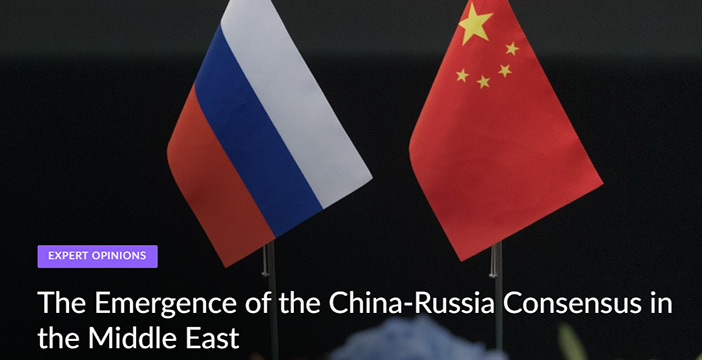
China and Russia are growing their diplomatic and economic influence in the Middle East, making the most of space left behind by an absent US. This shift in the region’s geopolitical tenor and the China-brokered Saudi-Iran reconciliation could open the door to ending the war in Yemen and other conflicts, ‘South China Morning Post’ writes.
The balance of geopolitical power is shifting, and countries which want to either preserve or alter that equilibrium need the support of other nations. Saudi Arabia and Iran play an important role in this regard. These countries’ oil wealth and geostrategic importance give them the ability to help determine the global order.
China and Russia increasingly have room to move in the Middle East. This is a result of the United States shifting its attention to the Indo-Pacific, deteriorating US-Saudi relations, antagonism between the US and Iran, the Saudi-Iran reconciliation and US-China tensions.
The US is fostering closer ties with India, Southeast Asia and Pacific island nations in its effort to constrain China, which poses a challenge to its superpower status. Perceptions of the US attempting to impose its values on other nations have led some countries to broaden their search for new partners.
In addition, Saudi Arabia is transitioning away from its reliance on oil as part of its Vision 2030 project, and at this point strengthening its ties with China and Russia is crucial.
Saudi Arabia appears to want to expand its arms trade with China. Having been a heavy purchaser of US arms for years, this is a significant shift in Saudi policy.
China is also investing in Saudi Arabia’s economic and technological development. Chinese companies are already involved in the construction of the megacity Neom, a US$500 billion project. In December, Huawei – a Chinese tech giant that has been the subject of US sanctions – signed a memorandum of understanding with Saudi Arabia to construct hi-tech complexes and offer cloud computing services in Saudi cities.
China’s Belt and Road Initiative includes many projects in the Middle East. Saudi Arabia alone has received US$5.5 billion in investments from China as part of the initiative. In 2021, China and Iran signed a 25-year cooperation agreement.
These shifting patterns in relations show how China and Russia have benefited from the void left in the Middle East as the US turns its attention to Asia. China has included Iran in the Belt and Road Initiative and is buying cheap Iranian oil which would otherwise not be able to be sold on the world market. Russia is also strengthening its diplomatic and economic connections with Iran.
Russia, Iran and India are working together to create a trade route that would run from the Caspian Sea to the Indian Ocean. This could allow Iran and Russia to skirt European sanctions that force them to re-route their supply networks. It would also give Russia direct access to markets in South Asia.
Long-time adversaries Saudi Arabia and Iran reconciling could be a turning point in world history, helping ease conflict in Yemen and Syria. Having acted as mediator in the Saudi-Iran deal, China could have greater influence in the Middle East.
Given the shifting circumstances in the Middle East, China and Russia could be on the path to occupy the diplomatic and economic space the US once held, ‘South China Morning Post’ stresses.
read more in our Telegram-channel https://t.me/The_International_Affairs

 10:05 06.04.2023 •
10:05 06.04.2023 •






















